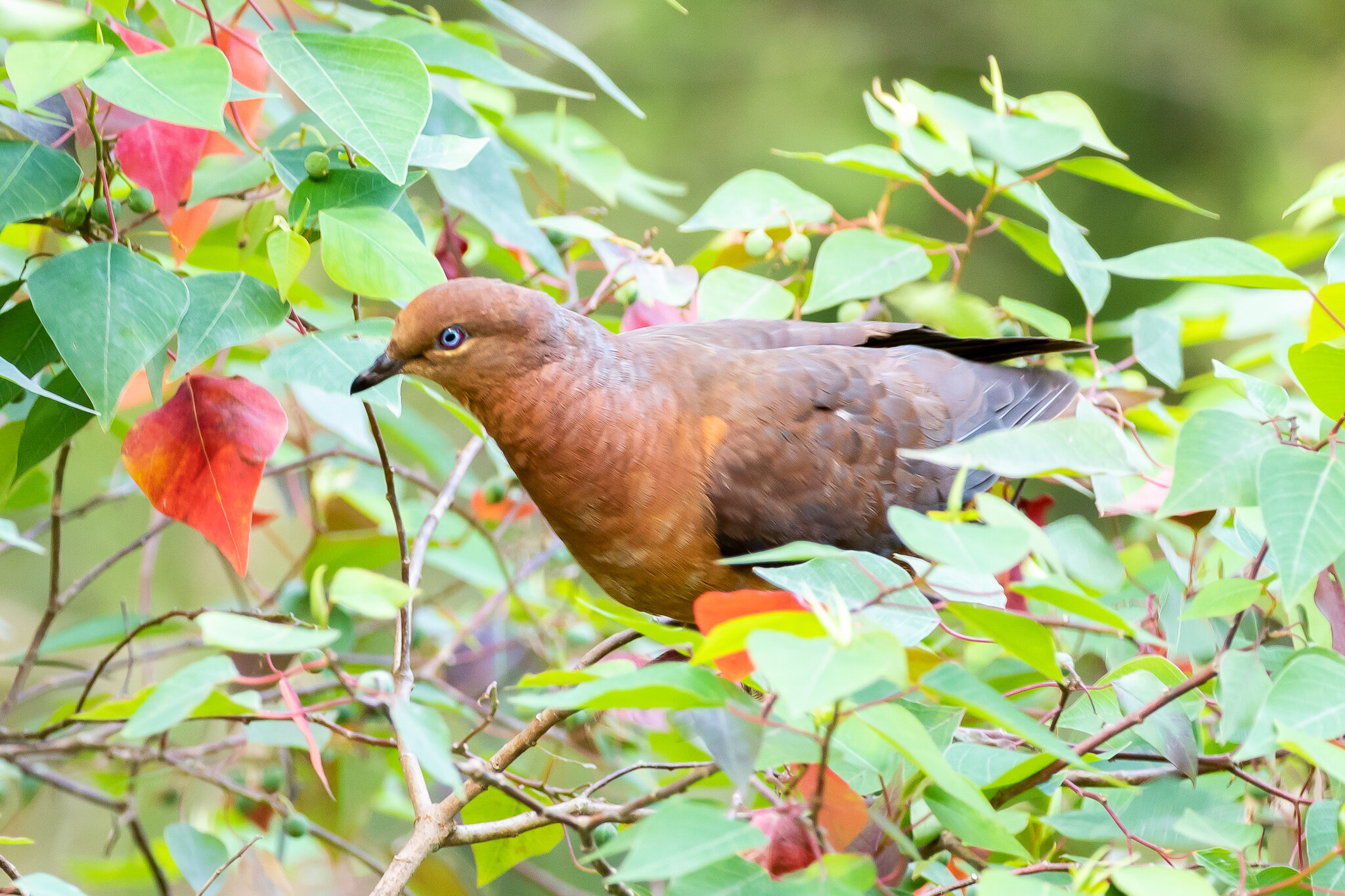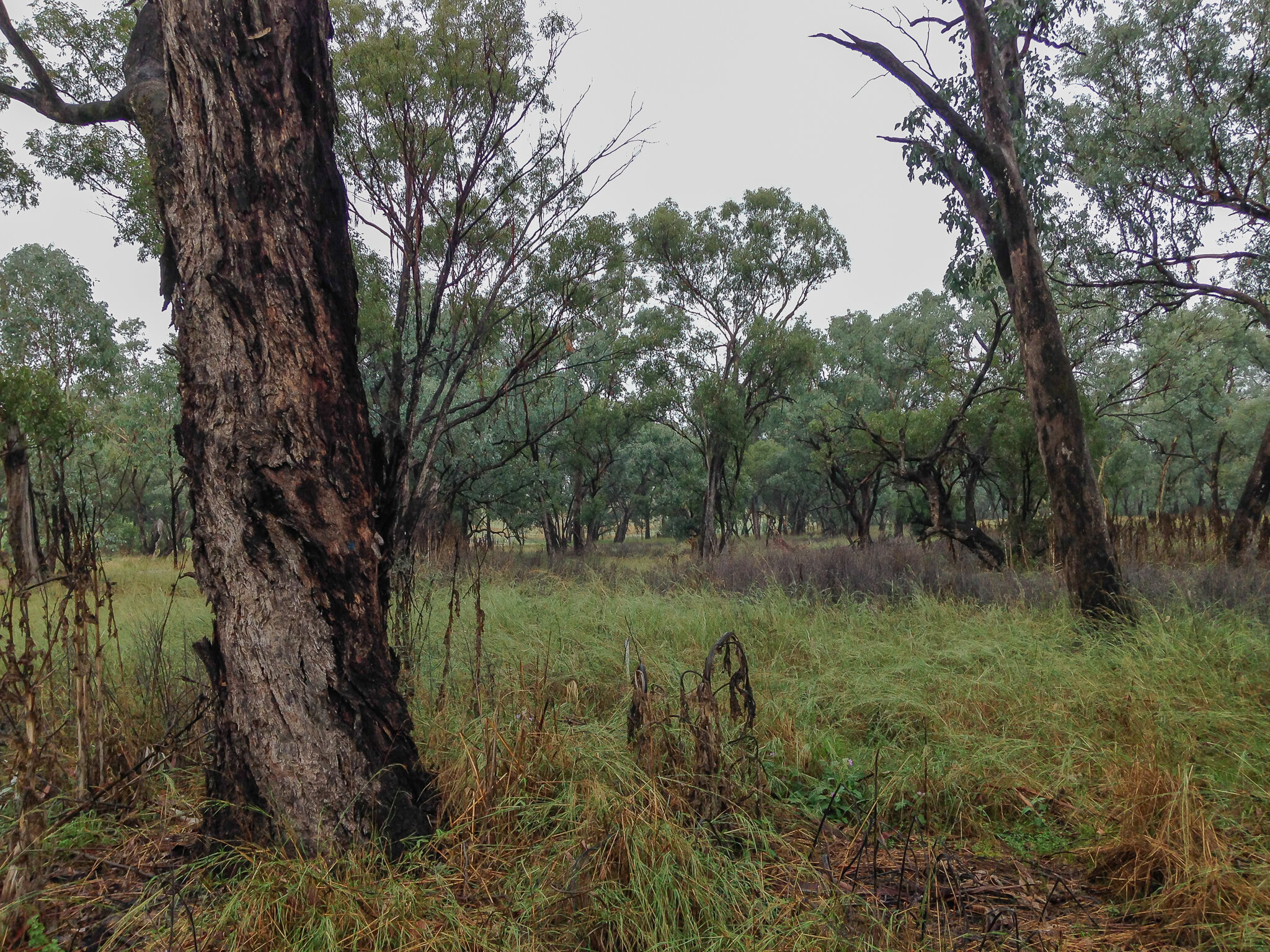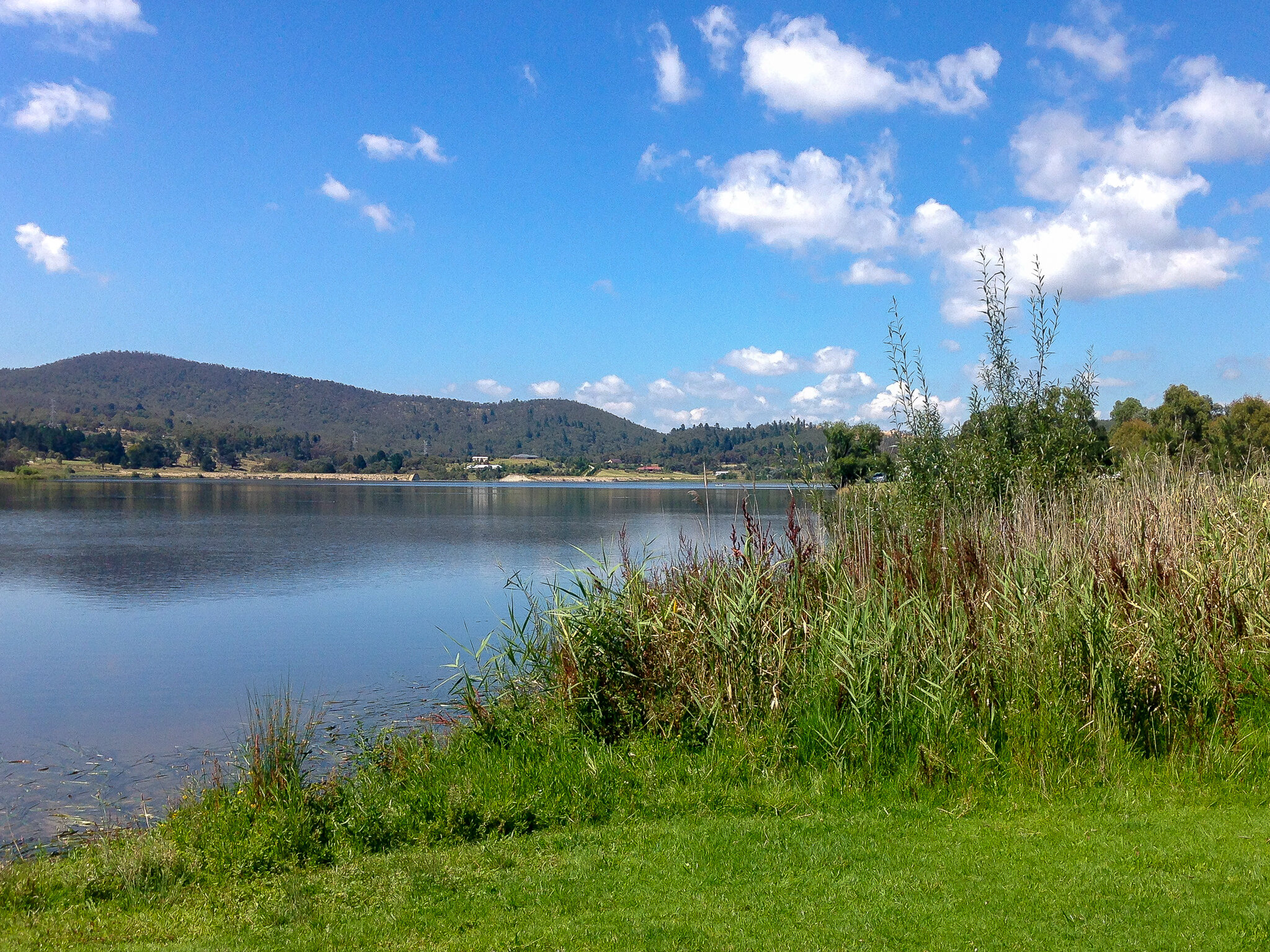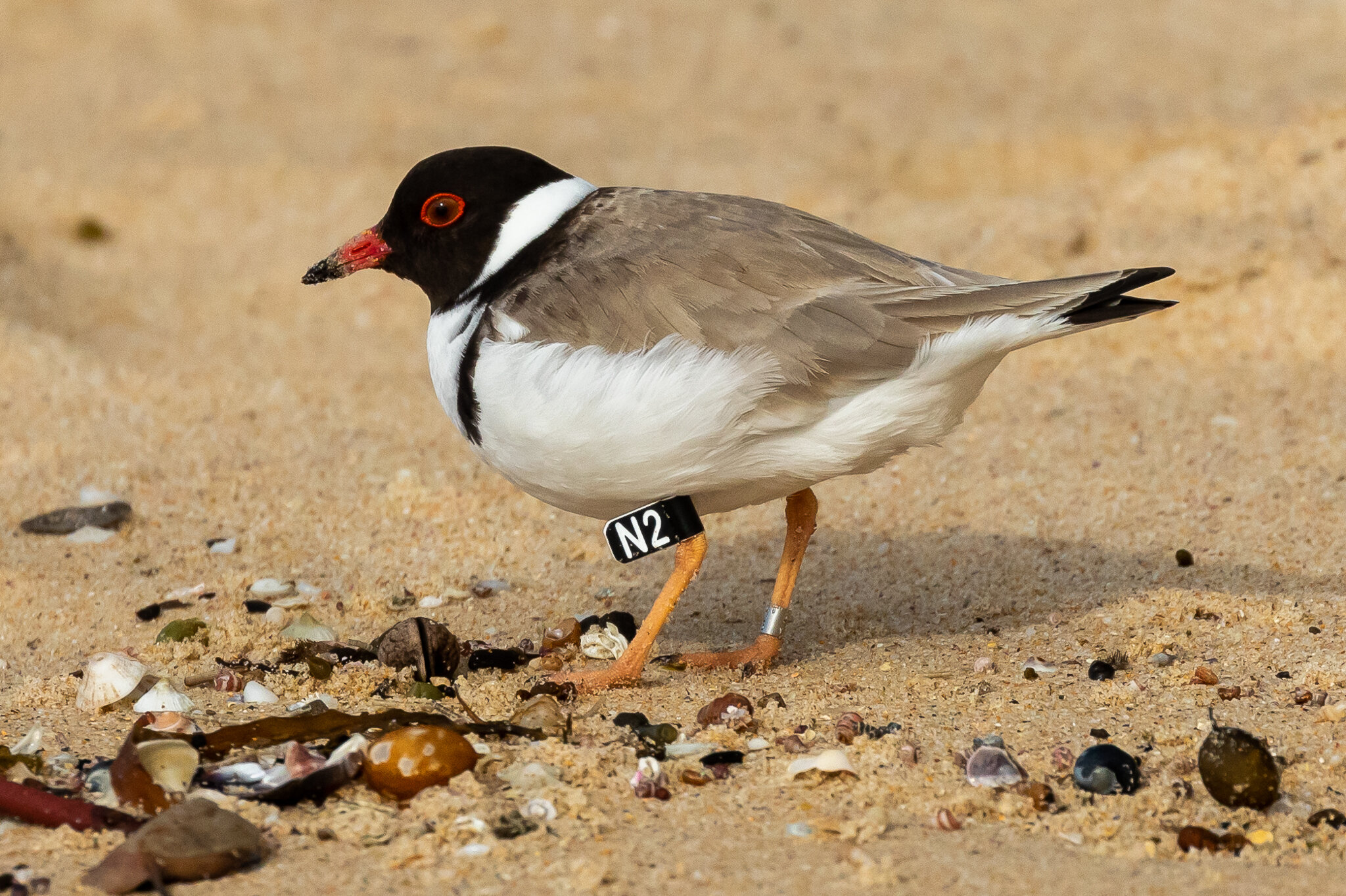Taking Wootton Way just north of Buladelah on NSW’s Mid North Coast, you come to a dirt road leading to the “The Grandis”. This Eucalpytus Grandis (or Flooded Gum), stands at over 70 metres tall and is reputedly New South Wales’ tallest tree. A bit further up the Wootton road is O’Sullivans Gap Picnic Area. Here among cathedral like “grandis” grow tall palm trees, ferns and areas of dense rainforest.
The dense forest provides little light for photography, this photo of a Rufous Fantail taken at 1/160 seconds, f/5.6 at ISO 2000!
I was enticed to this spot by the description in Ted and Alex Wnorowski’s “Australian Good Birding Guide: NSW-ACT”, which promised Noisy Pitta, Pale-yellow Robins and Australian Logrunners. Although I did not see any of these this place is well worth a visit. If you take the bush track wear gumboots sprayed with copious Bushman Repellant to discourage the leeches!
The beautiful Eucalpytus Grandis provide a majestic setting with the dense undergrowth that surrounds O’Sullivan’s Gap Picnic Ground in Myall Lakes National Park.
This Sacred Kingfisher was high in a Eucalpytus Grandis. Other canopy birds included Topknot Pigeons and White-headed Pigeons.
Rainbow and Scaly-breasted Lorikeets (pictured) raced through the canopy. There were also small groups of Glossy Black-Cockatoos and Yellow-tailed Black-Cockatoos.
This Spectacled Monarch was my bird of the day, feeding in Lantana at the fringe of the picnic ground.
I was not sure what this bird in the dark understory was until the photo was developed on the computer. One of a pair of Yellow-throated Scrubwrens.
Numbers of Brown Gerygones (pictured) as well as Red-browed Finches, Superb Fairy-wren, and Silvereyes buzzed through the Lantana that grows around the picnic area and on the roadside.
































































